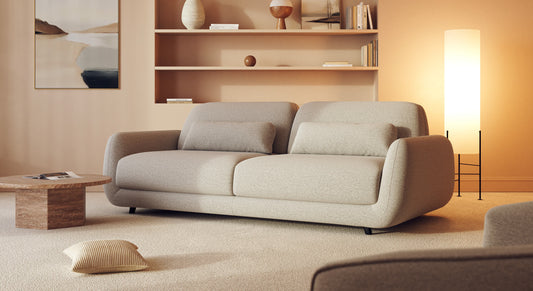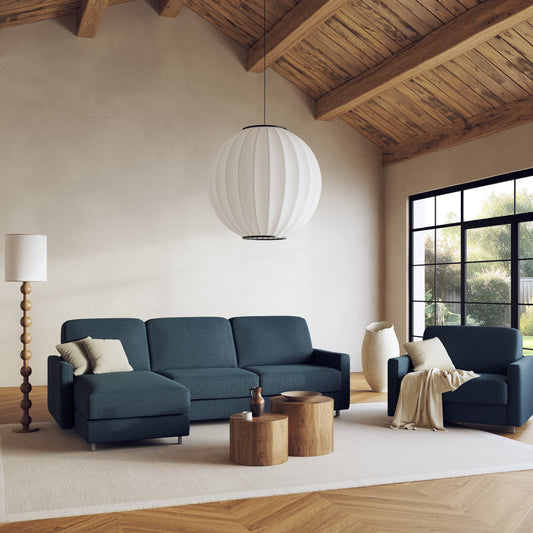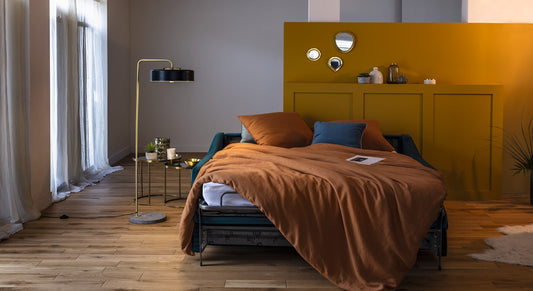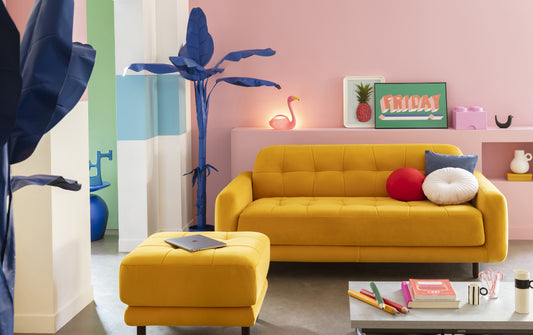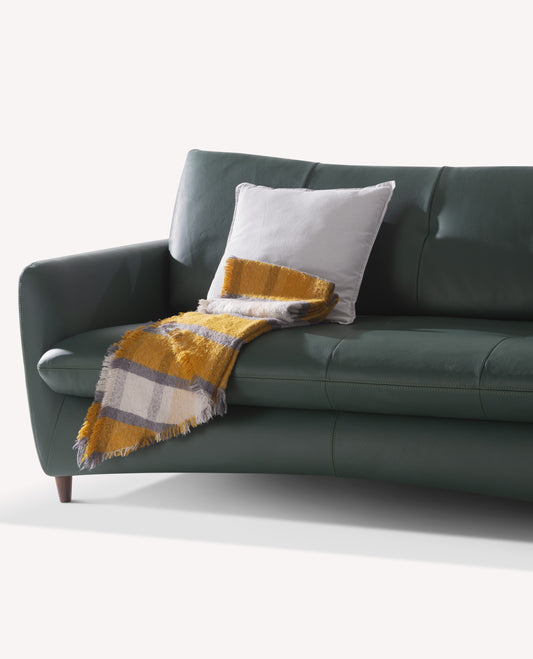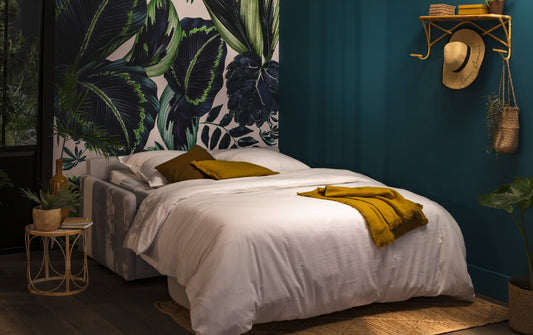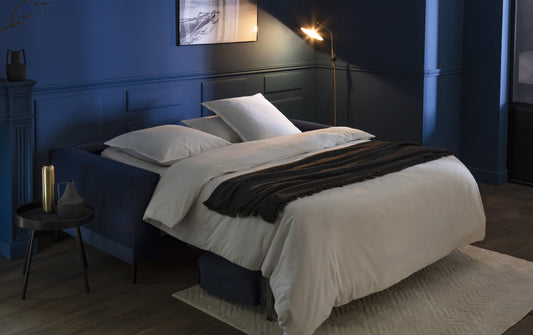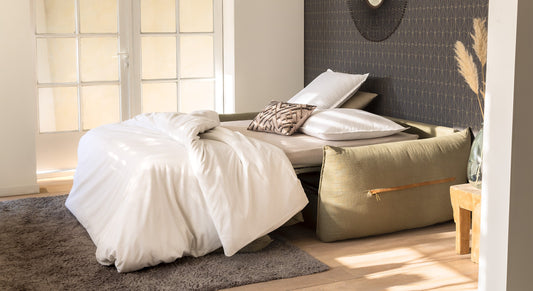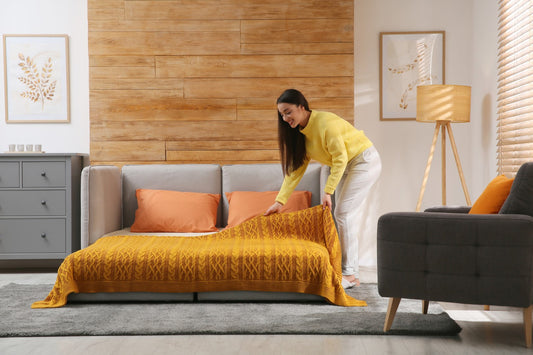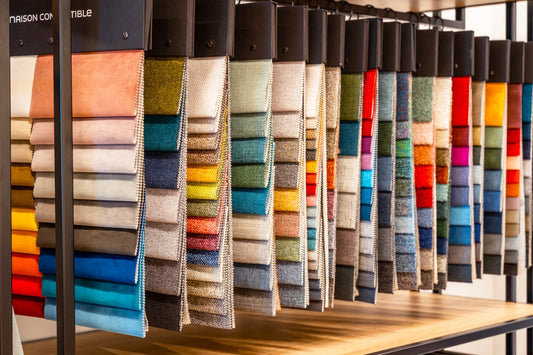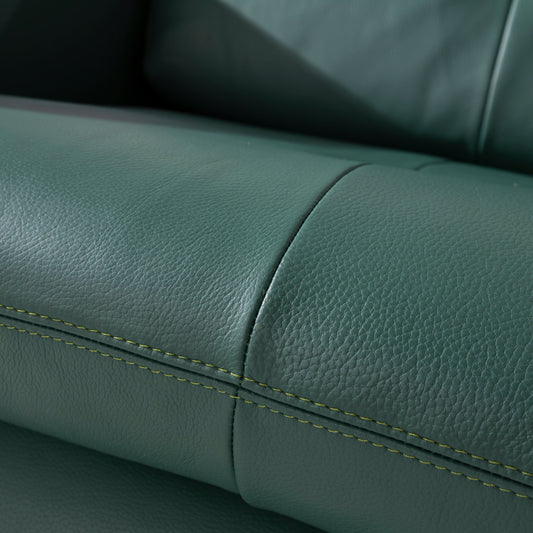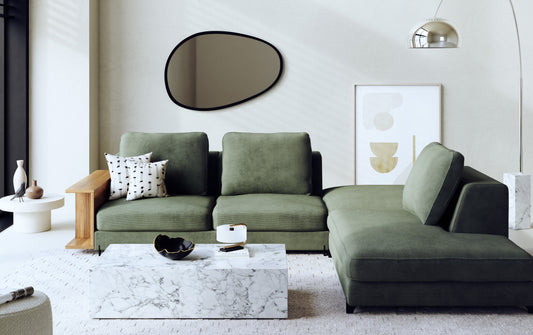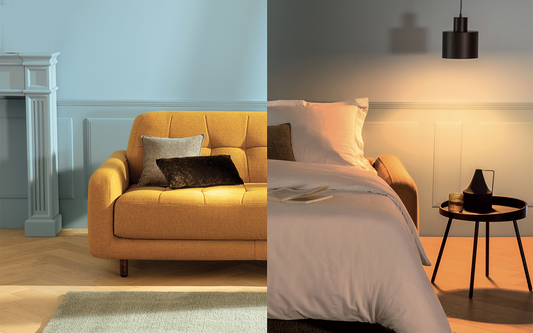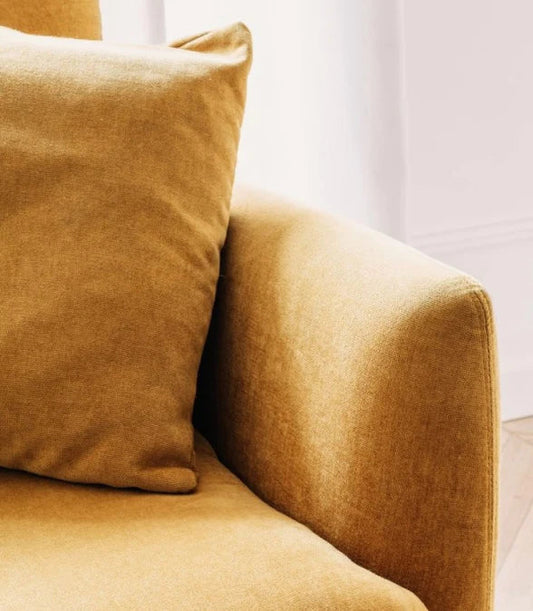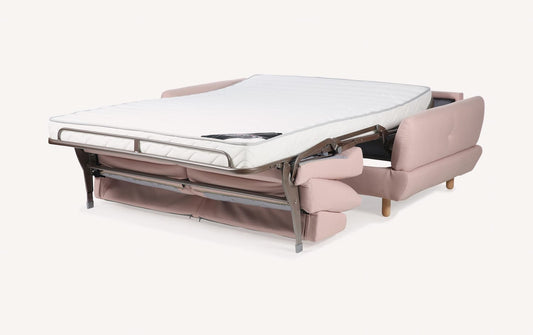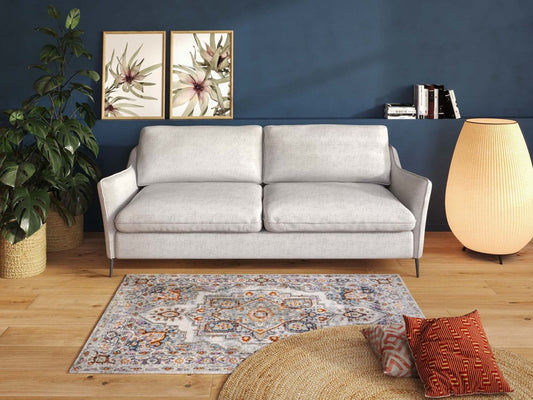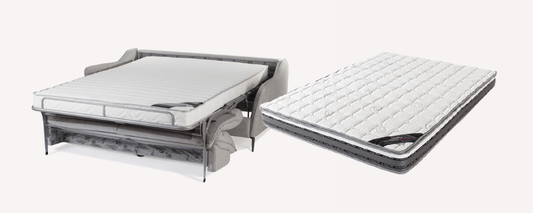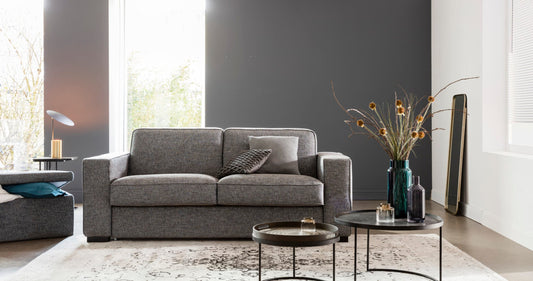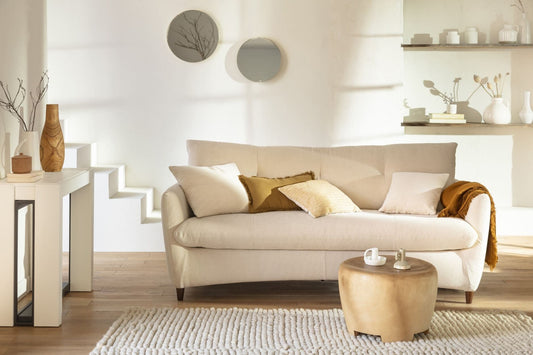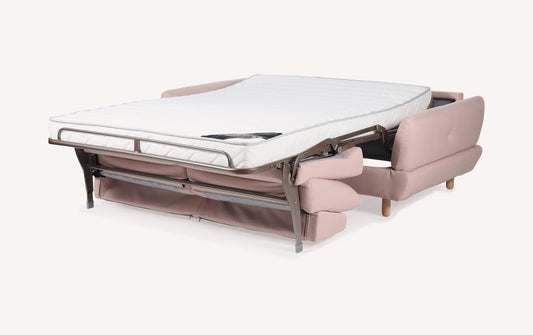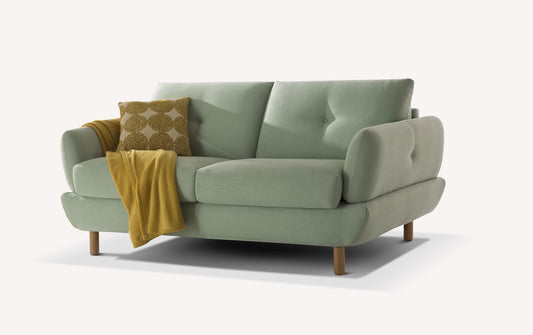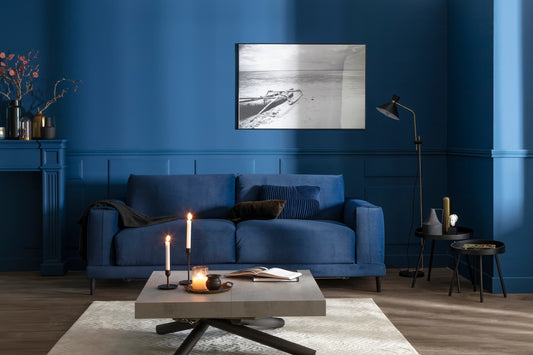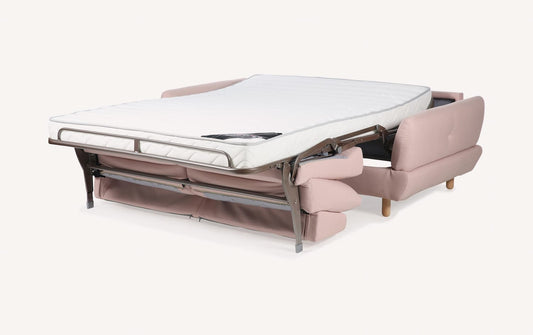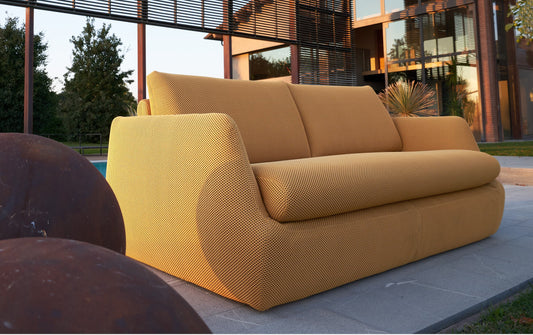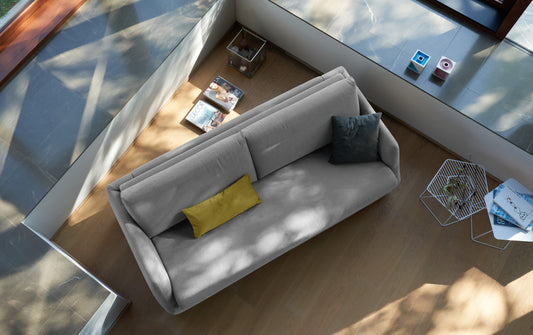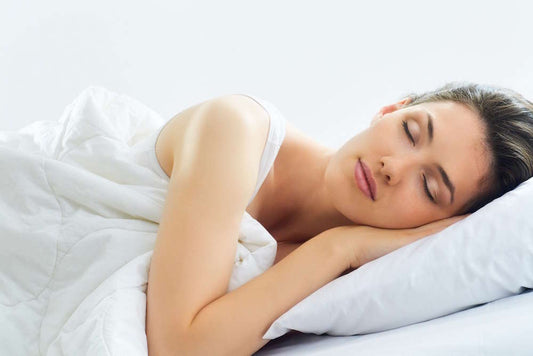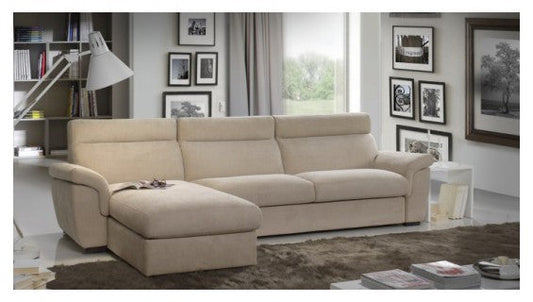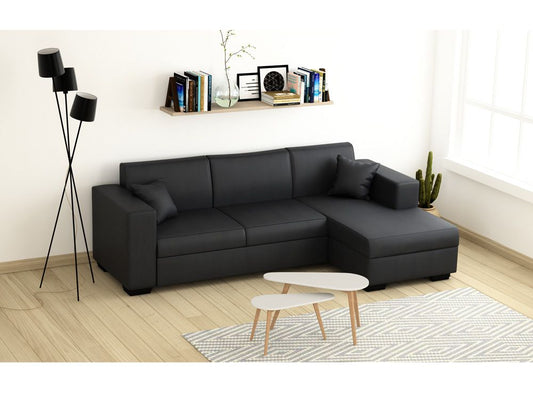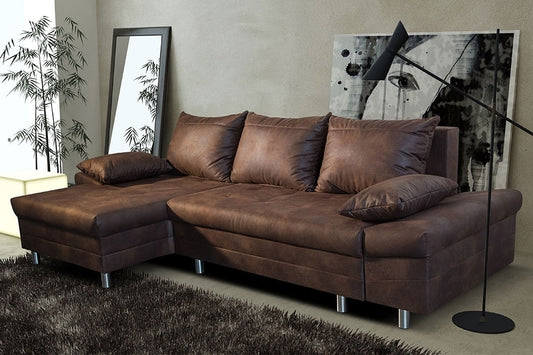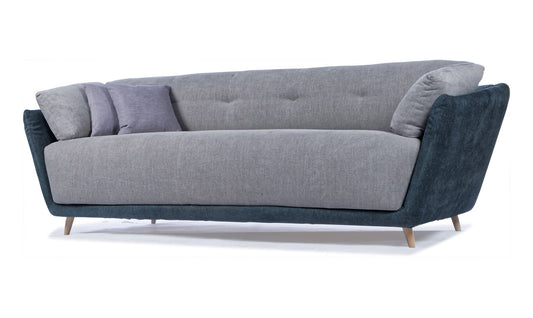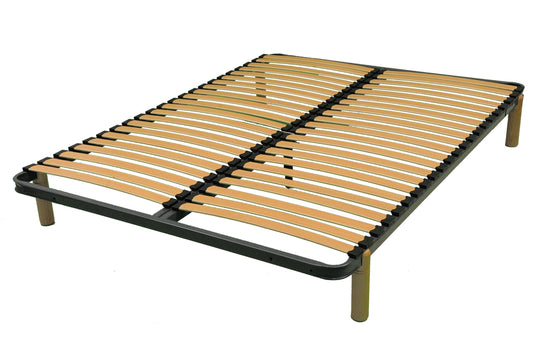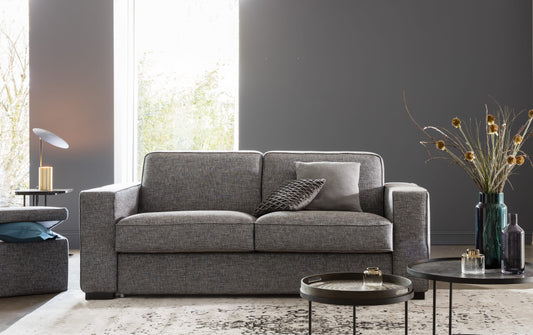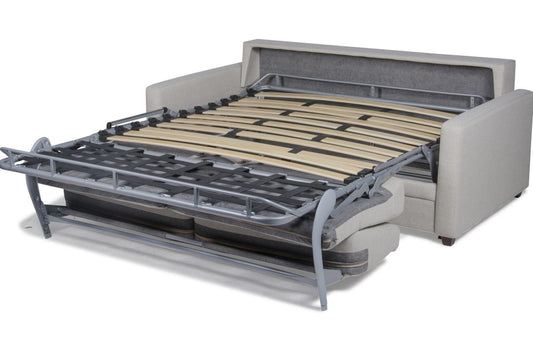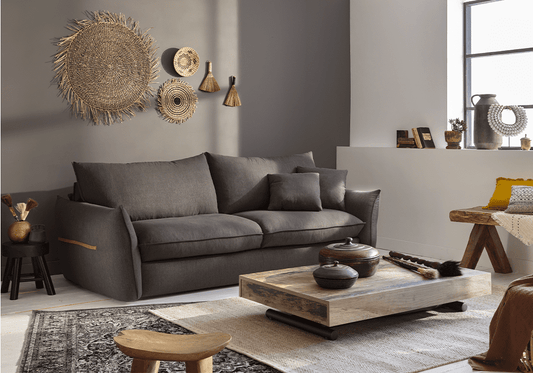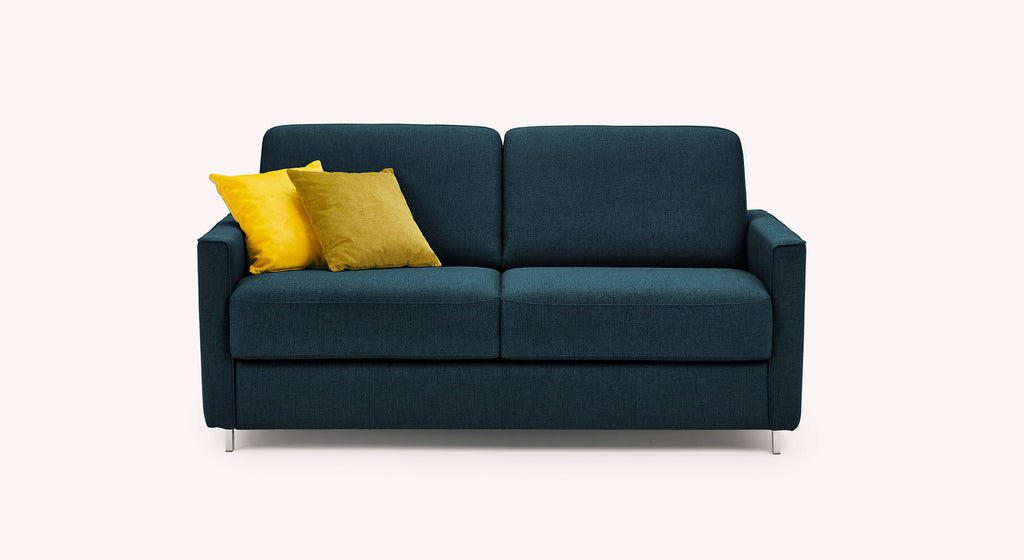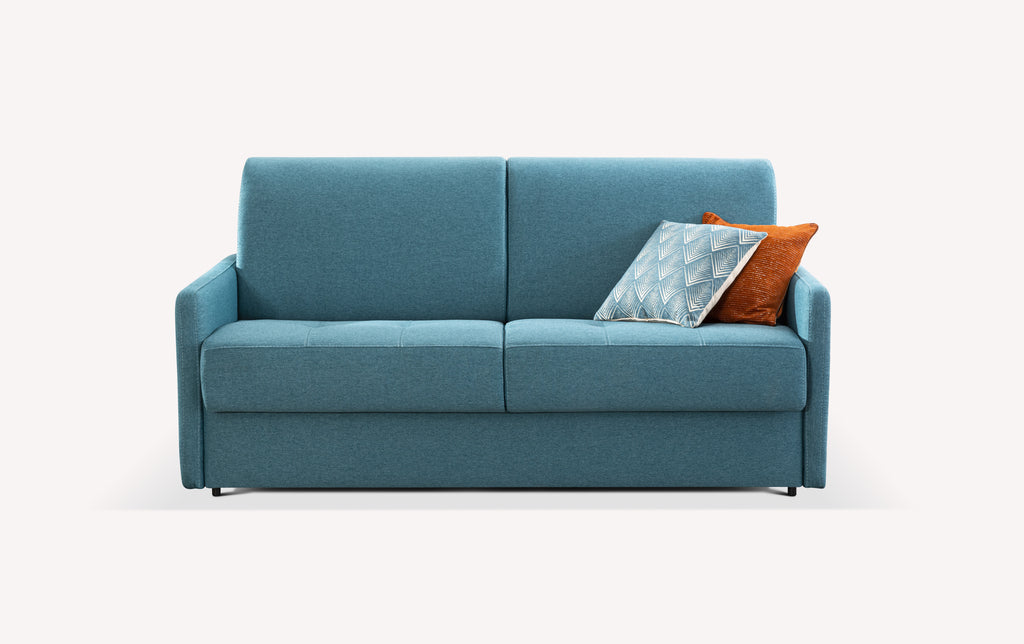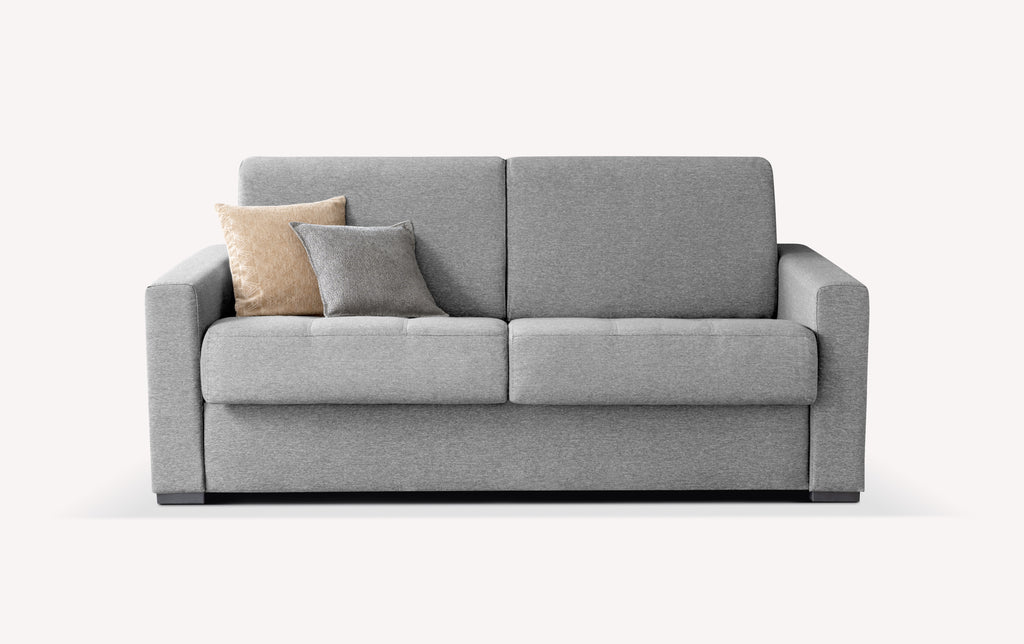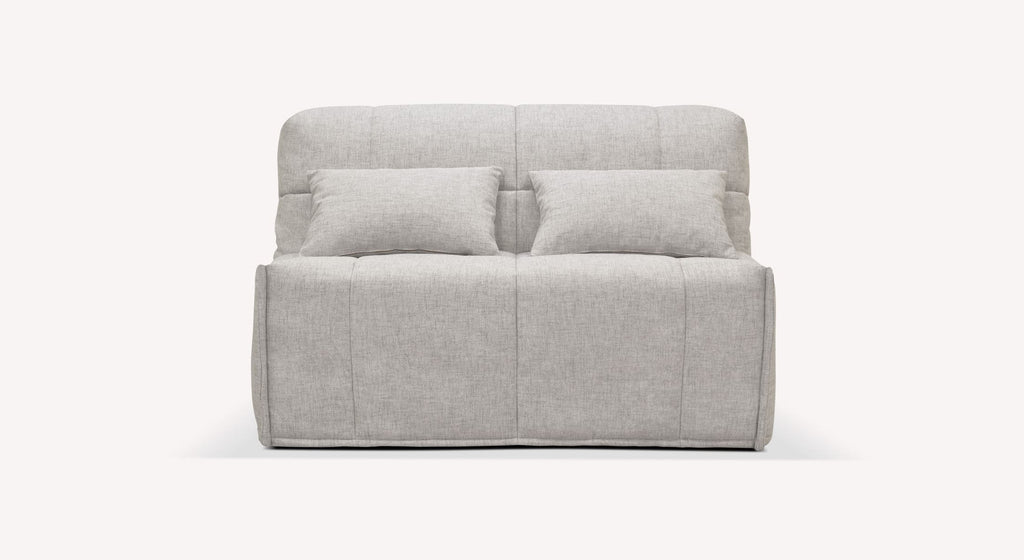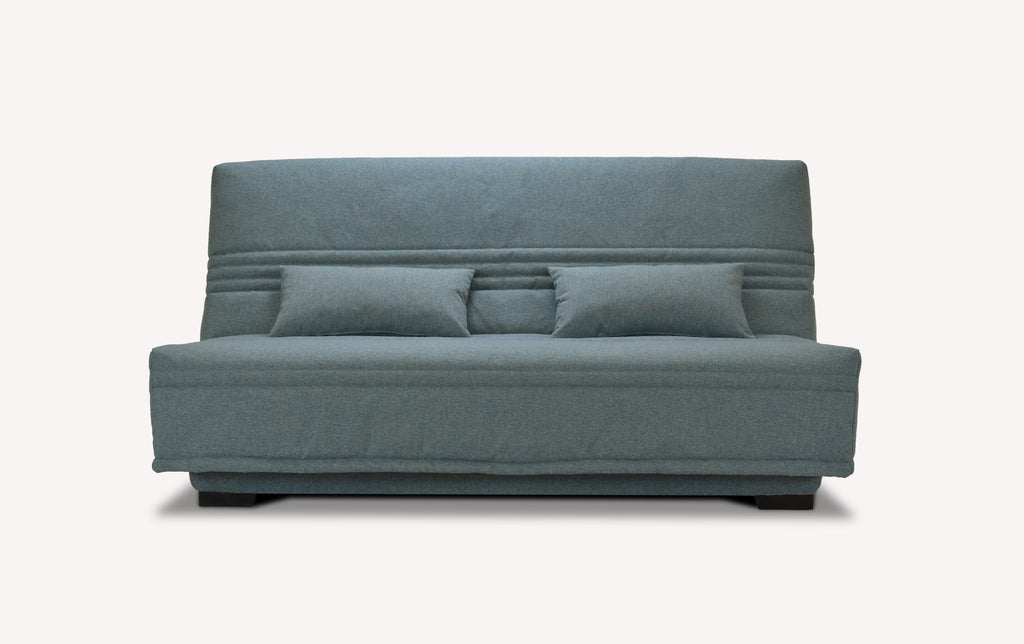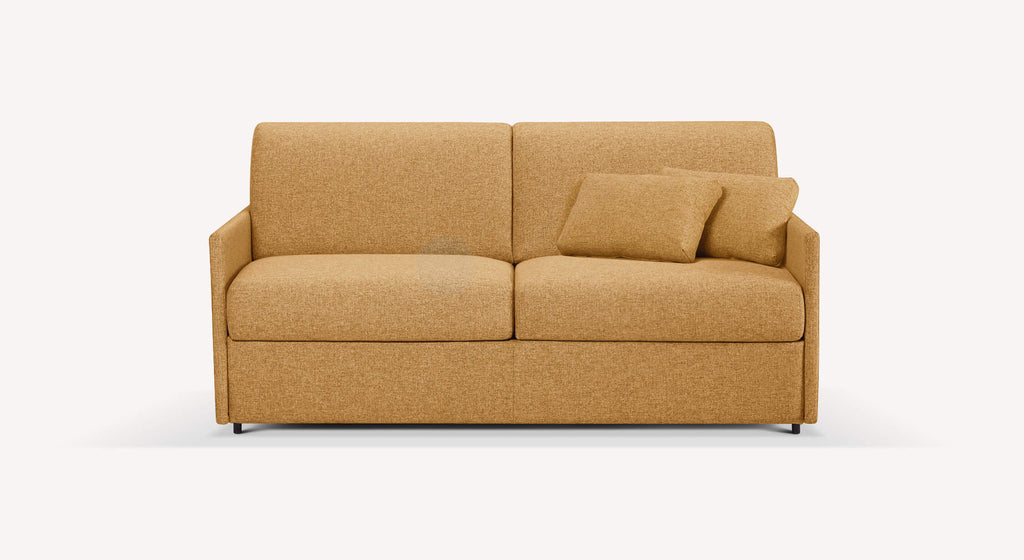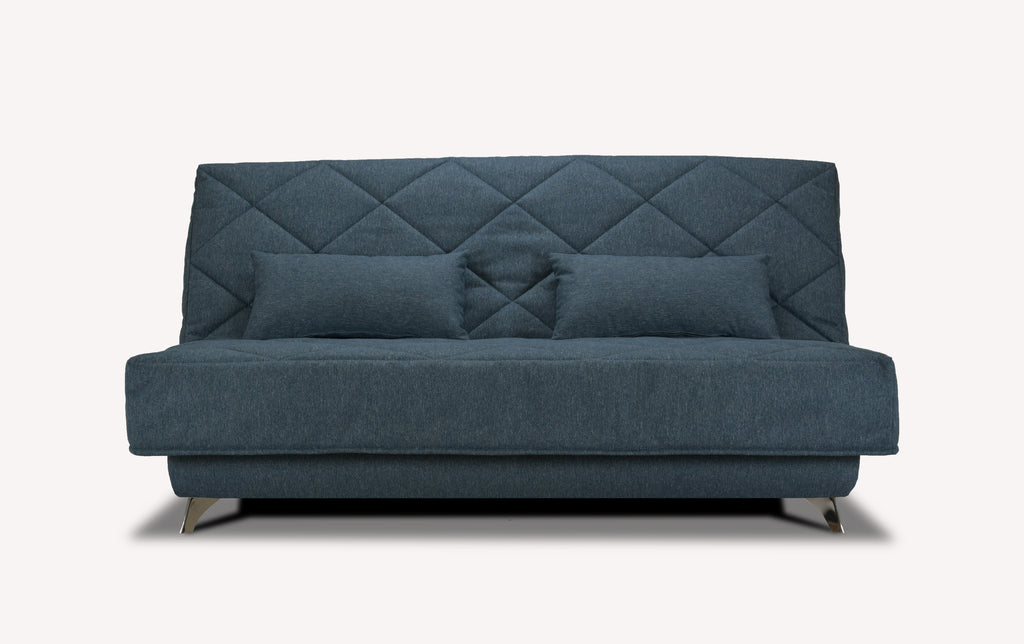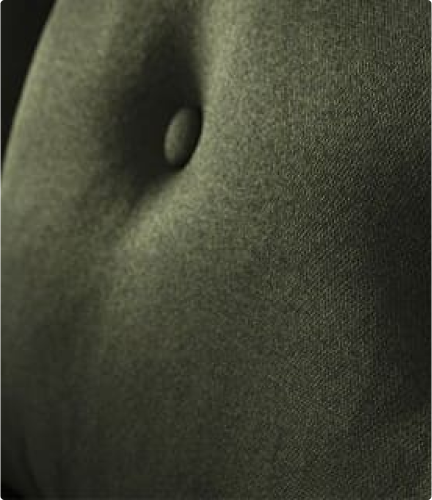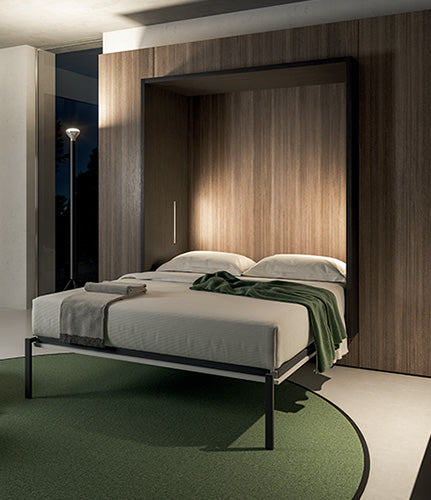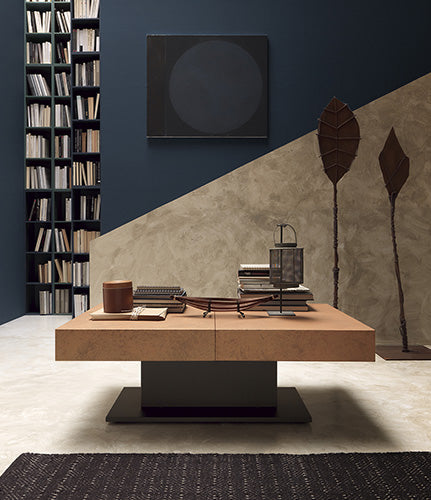What is the density of a sofa?
The density of a sofa is a key factor that influences both the durability and the quality of comfort of a sofa. Often misunderstood, this concept refers to the weight of foam present in the seat or back of the sofa. More precisely, it measures the weight of the foam per cubic meter (kg/m³). Contrary to what one might think, density does not directly determine whether a sofa is firm or soft , but it impacts the resilience of the foam and, therefore, the durability of the sofa.

A high density indicates a foam that can withstand daily wear and tear , thus offering better resilience . This means that the sofa will retain its comfort and shape for longer. Conversely, a lower density leads to a rapid collapse of the foam, particularly on the seat , where the weight is most often concentrated. In most cases, a density above 30 kg/m³ is considered good. Above this, we speak of a good density, while below this, the foam risks wearing out quickly.
How to judge the comfort of a sofa?
While foam density plays a vital role in the longevity of a sofa, it is not the only criterion to consider when judging comfort . In fact, several other elements are crucial to ensuring optimal comfort, whether soft or firm . Here are the most important criteria to consider:
The type of padding
Padding is an essential component of comfort. It can be made of various materials, such as memory foam or down. Each material provides a different feel. For example, dense foam will be firmer , while feather padding will provide more softness .
The inclination of the backrest
The inclination of the backrest also plays a major role. A backrest that is too straight or too inclined can make sitting uncomfortable in the long term. A good sofa must offer an appropriate inclination for optimal back support.
The mechanics
The internal mechanisms of the sofa also influence its comfort . For example, high-quality sofas often incorporate springs or suspension systems to provide better support. Fixed sofas with springs guarantee a more durable and comfortable seat.
The thickness of the foam cells and the shape of the foam
The thickness of the foam is another key factor. The thicker the foam, the more you will sink into the seat, creating a softer feeling. Additionally, the shape of the foam can also influence comfort. A rounded seat will be perceived as softer, while a flatter seat will be judged as firmer .
The sofa's lift
The load-bearing capacity of a sofa depends on the thickness of the bubbles in the foam, especially in convoluted foams. High resilience foams, cold-molded, evacuate air to provide optimal support. The wider the cells, the softer the seat . Conversely, smaller cells make the foam firmer , ensuring better durability and quick recovery of shape after use.
The fabric and covering
The fabric used to cover the sofa also affects comfort . For example, a leather cover often traps air inside, making the seat stiffer. On the other hand, a more breathable fabric cover will promote a feeling of flexibility .
Quilting the fabric
The quilting of the fabric plays a big role in the comfort and feel of a sofa. The way the fabric is woven and padded directly influences how it feels when sitting . For example, a tufted sofa – where the fabric is stretched taut and secured at regular intervals with buttons or stitching – will generally be firmer . This style of quilting provides more rigid support because the padding is held in place more tightly.

Other types of weave , such as looser or softer fabrics, allow for a softer feel. The choice of quilting, therefore, depends on your preferences in terms of firmness and appearance. A tufted fabric is often used for more classic or elegant sofas, while a less stretched fabric will provide a more cozy and relaxed feel.
The best upholstery materials for the sofa
Foam padding
Foam padding is the most common option for sofas, especially because of its durability and good support . Several types of foam are available, each with its advantages. High resilience polyurethane foam is of better quality and guarantees a good compromise between comfort and longevity . It is often used for seating , because it offers good support and excellent resilience .
The most common foam densities range from 28 kg/m³ to 40 kg/m³ . Foam from 30 kg/m³ is considered to be of good quality. Below this, the foam may lack strength , leading to rapid sagging, creating hollows in the seat .
Fiber padding
Fiberfill is another option, often firmer than foam. It is used for those who prefer a sofa with more rigid support , especially suitable for those looking for more structured comfort. However, it can be less enveloping and comfortable in the long run.
Feather padding
Feather filling is the most luxurious, but also the most expensive, choice. It provides a feeling of envelopment, with a soft and deep comfort . This type of filling allows you to sink into the seat slightly, which can be pleasant for some people. However, it is not suitable for everyone, especially older people who may find it difficult to get up from a sofa that is too soft.
What density should you choose for the other parts of your sofa?

The density of the file
Although the backrest is generally less stressed than the seat , it is preferable to have a foam with a good density to ensure optimal durability . A correct density for the backrest is around 25 to 28 kg/m³ , offering good support while remaining comfortable.
What density for a comfortable sofa bed?
For a sofa bed , the density of the foam is even more important, as the sofa must be able to withstand daily use as a bed and sofa. A density of at least 30 kg/m³ for the seat and mattress is recommended to ensure good support and prevent the foam from sagging quickly.
Maintain the ideal density of the sofa over time
In order to maintain the density and comfort of your sofa, it is essential to take proper care of it. Avoid heavy loads or excessive use on specific parts to preserve the resilience of the foam. Regular maintenance of the upholstery and padding will extend the life of your sofa, while ensuring optimal comfort over the years.
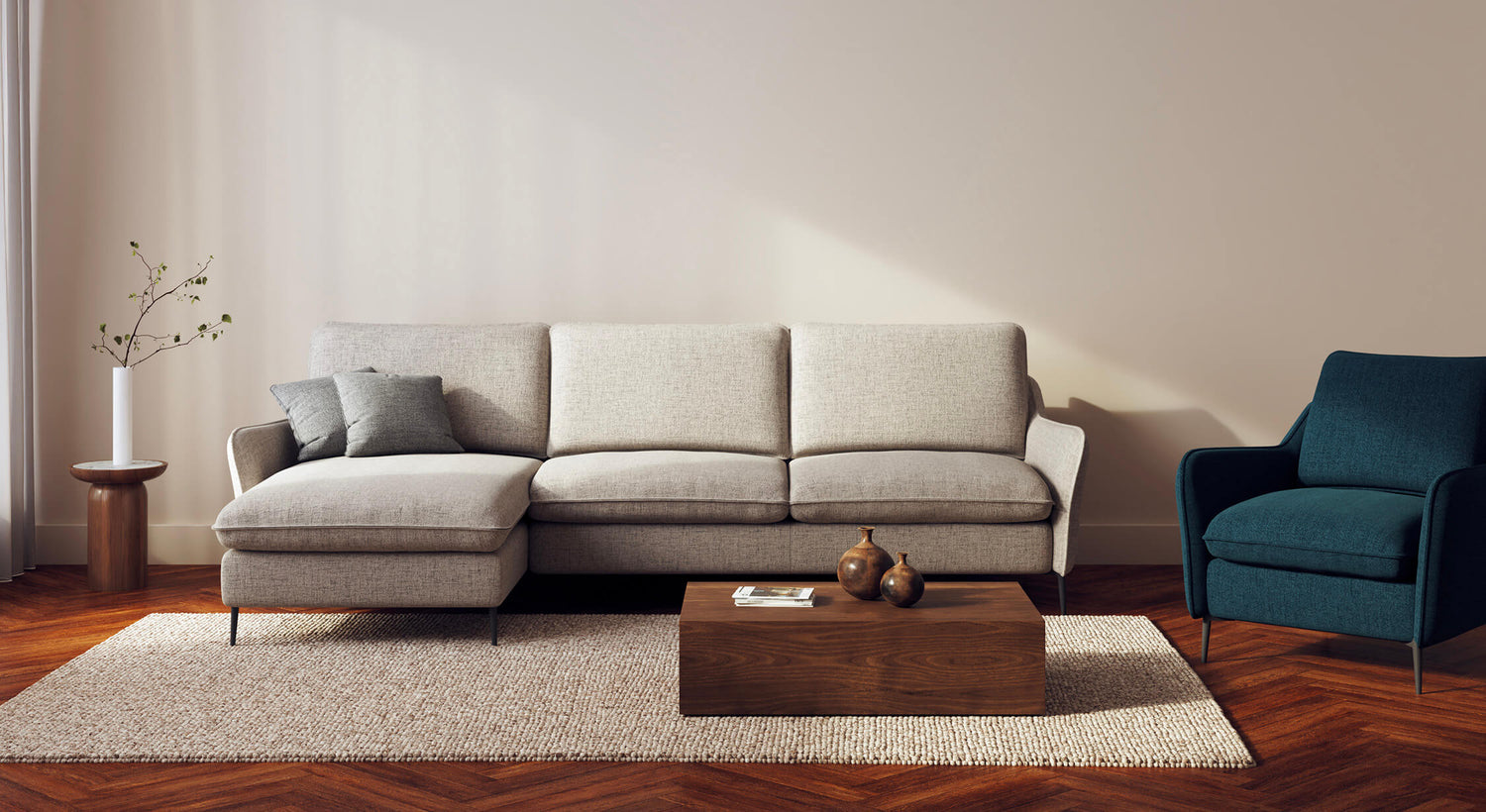
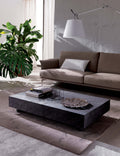 The up and down coffee table: practical on a daily basis for small homes
The up and down coffee table: practical on a daily basis for small homes
 Liftable table: which design to go with my sofa?
Liftable table: which design to go with my sofa?
 Liftable coffee table: round or rectangular? Our advices
Liftable coffee table: round or rectangular? Our advices
 Entretenir et nettoyer un canapé en simili cuir : nos conseils
Entretenir et nettoyer un canapé en simili cuir : nos conseils
 Which system for your sofa bed?
Which system for your sofa bed?
 How to Remove Scratches from a Leather Sofa Bed: Guide and Methods
How to Remove Scratches from a Leather Sofa Bed: Guide and Methods


